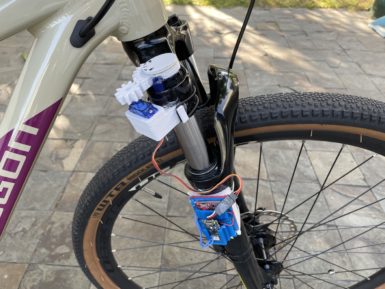
Solar Panel Charge Controller - 10 A
Charge controller for photovoltaic applications controlled by a microcontroller and capable of operating automatically at both 12 and 24 V.
Overview
It allows to provide the right degree of current to the batteries protecting them from an excess of discharge or charge in order to prolong their life cycle as much as possible.
Attention! use only with 12 and 24 V solar panels.
It protects the battery from polarity reversal, automatically enters protection and locks when the load current exceeds the regulator’s range. In case of short circuit, it enters protection and it overload protection.
To avoid complete battery discharge, the regulator will automatically disconnect the load at a certain voltage that cannot be less than 11.2 V for the 12 V battery and 22.4 V for the 24 V batteries.
Tech specs
- Nominal voltage: 12 V / 24 V automatic detection
- Maximum current: 10 A
- Maximum solar panel input voltage: 41 V
- Cut-off voltage: charged battery: 13 V (at 12 V) - 26 V (at 24 V) discharged battery: 11.2 V (at 12 V) - 22.4 V (at 24 V)
- Reconnection voltage: 13 V (at 12 V) - 26 V (at 24 V)
- Voltage drop: < 170 mV
- Dimensions (mm): 133x70x35
- Weight: 150 g
Conformities
Get Inspired
Arduino based bicycle movement sensor and GPS tracker.

… magnetic reed switch, but building the game himself in Unity. He had to construct and animate models for himself, the bike, and the scenery. After adding an AI and ranking system to the game, he was able to successfully race within the virtual environment on a real bike. Responsive LED system Motivated by the desire for a more advanced lighting system while on her nighttime bike rides, Natasha (TechnoChic) decided to affix strips of NeoPixel LEDs all over her bike that could react to music in real-time. The LEDs are controlled by an Arduino Nano 33 IoT that is, in turn, connected to her boombox via a 3.5mm audio jack for reading the audio signal. Two additional Nano 33 IoT boards were used for the wheels, along with more NeoPixels and batteries for each. GPS tracker Bicycle theft has been rapidly increasing over the last couple of years, which is why being able to recover a stolen bike has become vital. Johan’s bike tracker project contains an Arduino MKR GSM 1400 which reads motion data from an IMU and uses it to determine if the bike has moved when it is not supposed to. Once movement is detected, the board reads GPS data from a MKR GPS Shield and sends it over an LTE data connection in real-time so that the bike can be found. Integrated safety features The majority of mountain bikes lack useful safety features such as integrated lights, turn signals, and speed tracking, which is why Collin Wentzien embarked on his “(not so) electric bike” project. He built a series of features, including automatic brake/turn lights, a headlight, and an electronic horn with the goal of improving safety. Furthermore, his bike also got a bike computer upgrade which contains an Arduino Mega, GPS module, and dual screens for displaying relevant telemetry data. Speedometer display After losing the display unit for her bike computer, Element14 Presents host Katie wanted to replace it with a DIY version that tracked the current speed

